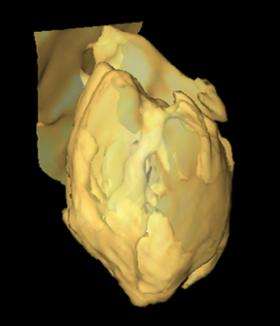Researchers Investigate Early Solar System

Scientists at the Naval Research Laboratory are part of an international research team that is studying minerals formed during the early history of the solar system.
Their goal is to learn more about the chemical and physical processes that occurred during the formation of the solar system. Their research was published in the May 2006 issue of Meteoritics and Planetary Science where a figure from the paper was selected as the cover image.
The researchers studied serpentine minerals in a group of primitive meteorites called CM carbonaceous chondrites. The CM carbonaceous chondrites formed over 4.5 billion years ago in the solar nebula, the cloud of gas and dust from which our sun and planets formed.
Using a transmission electron microscope (TEM), the researchers imaged the three-dimensional structure of the serpentines and analyzed their compositions. A TEM is capable of imaging the atomic structure of a material, and the research team needed its resolving power to analyze the serpentines, which are small, on the order of 90 nanometers.
Serpentines form by chemical reaction of anhydrous silicates (minerals that do not contain hydrogen) and water. The research team's findings reveal that the formation of these minerals occurred under oxygen-rich conditions, and suggest that the parent asteroids of the meteorites contained active hydrothermal systems that were capable of driving chemical reactions. Such reactions were likely similar to those that occur on Earth, but transpired over 4.5 billion years ago in space.
Thomas Zega, who is the lead author on the paper, and Rhonda Stroud are researchers in NRL's Materials Science and Technology Division. The research team also includes members from Arizona State University, Eötvös L. University in Budapest, Hungary, and Utrecht University in The Netherlands.
Source: Naval Research Laboratory




















